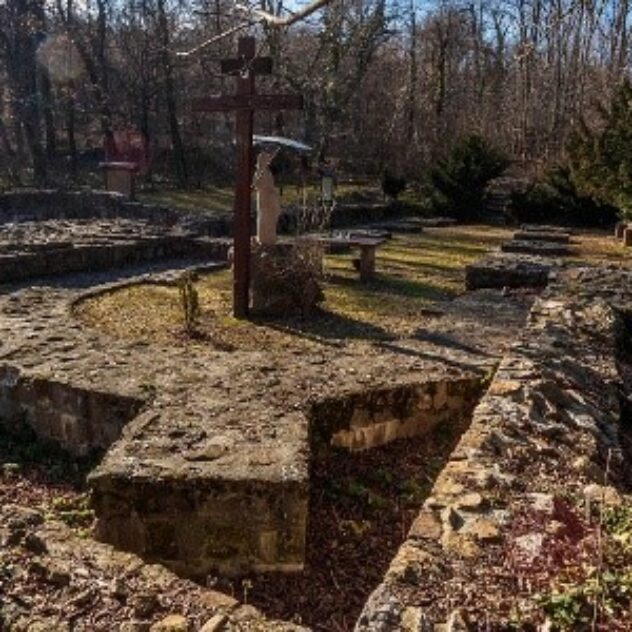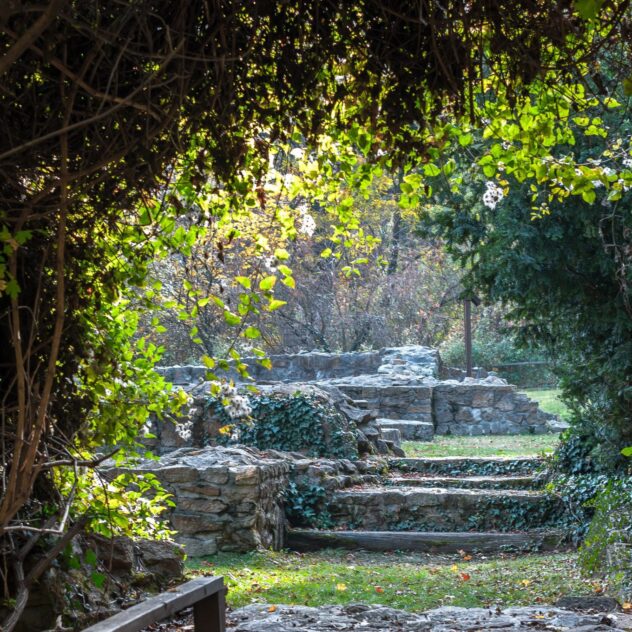Budaszentlőrinc Pauline Monastery
Information about the pilgrimage site
Budaszentlőrinc Pauline Monastery Situated in the neighbourhood of District II, in Budapest this monastery was built and inhabited by the Pauline Fathers. A history of the monastery’s location dates back to 1290, when Saint Lawrence founded the fourth monastery of the order in Budaszentlőrinc. Perhaps the most significant event in the history of the pilgrimage site occurred in 1381 when the earthly remains of the order’s namesake, Saint Paul the Hermit, were brought here. During the Battle of Mohács, the monastery was destroyed by the Ottomans. After 1540, there are no further records of the Budaszentlőrinc monastery from the 16th century. The monastery’s territory was already being used as a quarry in the 17th century. A source from 1627 reports that the Pasha of Buda reinforced their fortifications with stones from the Budaszentlőrinc monastery. The monastery was built from high-quality sandstone from Hárs Hill. After 1686, the Pauline monks tried to return to their former main monastery, but despite several attempts, they were unsuccessful. After 1686, Budaszentlőrinc became part of the city of Buda. Around 1770, a map depicting the entire territory of Buda, as well as parts of Pest and Óbuda, was created. The map also shows the ruins of Budaszentlőrinc.
Tourist attractions in the vicinity
Erzsébet-kilátó – a lookout tower stands atop János Hill. It was named after Queen Elizabeth, who visited János Hill several times and greatly admired the panorama. Interestingly, this was the first location in Budapest to receive decorative lighting. Inspired by its success, the Parliament and the Fisherman’s Bastion were later illuminated as well.
Zugliget Chairlift – the valley station is located in Zugliget, at the terminus of bus line 291, while the mountain station is situated at Hármaskút-tető, connecting János Hill with Normafa. It has been transporting hikers since 1970. The 1040-meter route takes approximately 12 minutes. Over the 2600-meter-long cable, 102 double-seater chairlifts overcome a 262-meter elevation difference, transporting passengers.
Széchenyi Thermal Bath – one of Europe’s largest bath complexes, it is also the first medicinal bath in Pest. Its establishment is credited to mining engineer Vilmos Zsigmondy. In 1927, the bath expanded with male and female public bath departments and a beach bath. Further renovations took place in the mid-1960s, including the addition of a social swimwear thermal department and a daytime hospital (complex physiotherapy department).
Pál-völgyi Cave – hungary’s longest cave system, with a total length of 32 km, of which 500 meters are accessible for visitors through a guided tour lasting one hour.
Hungarian Museum of Money – the interactive knowledge center, opened on March 15, 2022, introduces visitors to the world of finance and enhances the financial culture of various age groups through experiential learning. Visitors can discover the functioning of economic and financial processes, the basic rules of money usage, and learn about the activities of the National Bank of Hungary through practical examples and interactive methods.
Other tourists attractions in the vicinity of the pilgrimage site can be found on the website of Budapest official tourism website https://www.budapestinfo.hu/en
Accommodation
- Accommodation for pilgrims: Budapest XII. district Self-Government Pilgrim’s accomodation (Önkormányzati Zarándokszállás, Mátyás király út 53/b. | Magyar Zarándokút (magyarzarandokut.hu)
- Other private accommodation
Availability
By car
A monastery is easily accessible by car from Érd, just a 23-minute drive covering the 19 km distance. After passing the intersection of Budakeszi, Hárshegyi, and Jánoshegyi roads, it’s located a few hundred meters ahead on the left side of the road. Once parked, it’s just a 5-minute walk to reach it.
By public transport
It’s possible to reach the monastery ruins by bus or train. The ruins are located 260 meters from the Gyermekvasút Szépjuhászné stop, which can be reached with a few minutes’ walk.
On foot
The monastery can be reached via a marked hiking trail through the Budakeszi forest.
On a bicycle
The majority of the route can be completed without much effort, although towards the end, visitors will encounter a steeper incline. The journey takes approximately one and a half hours one way.








